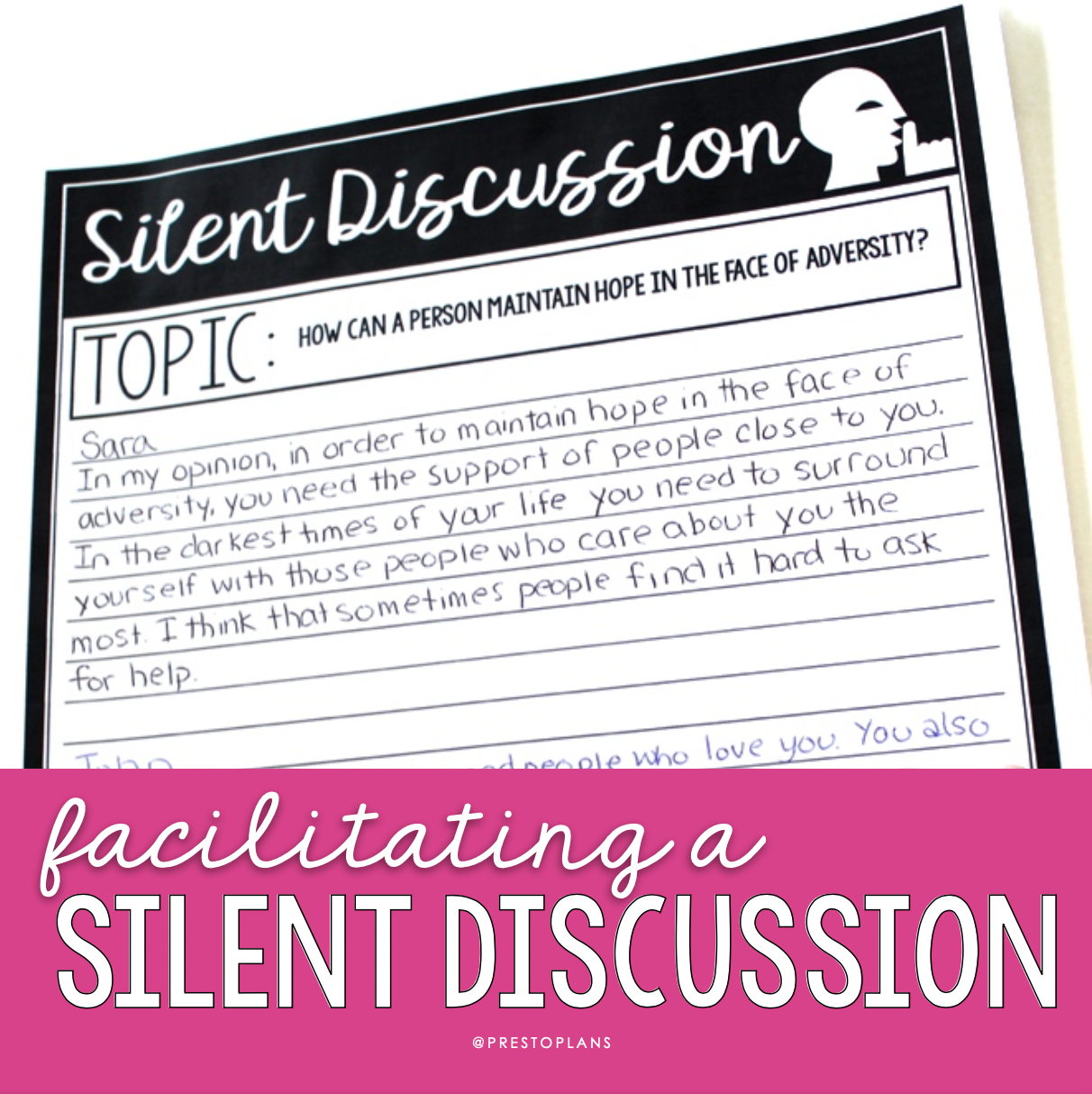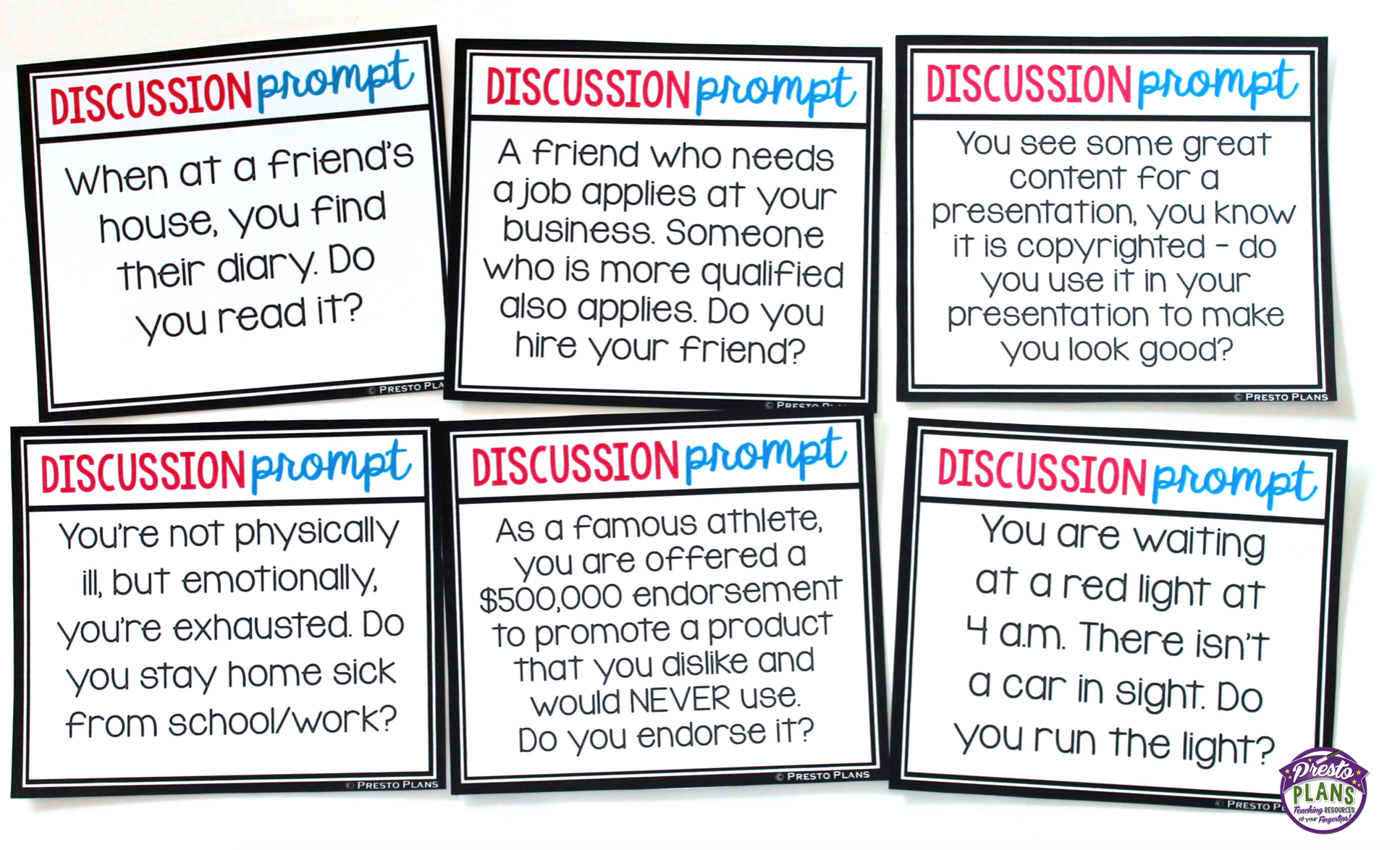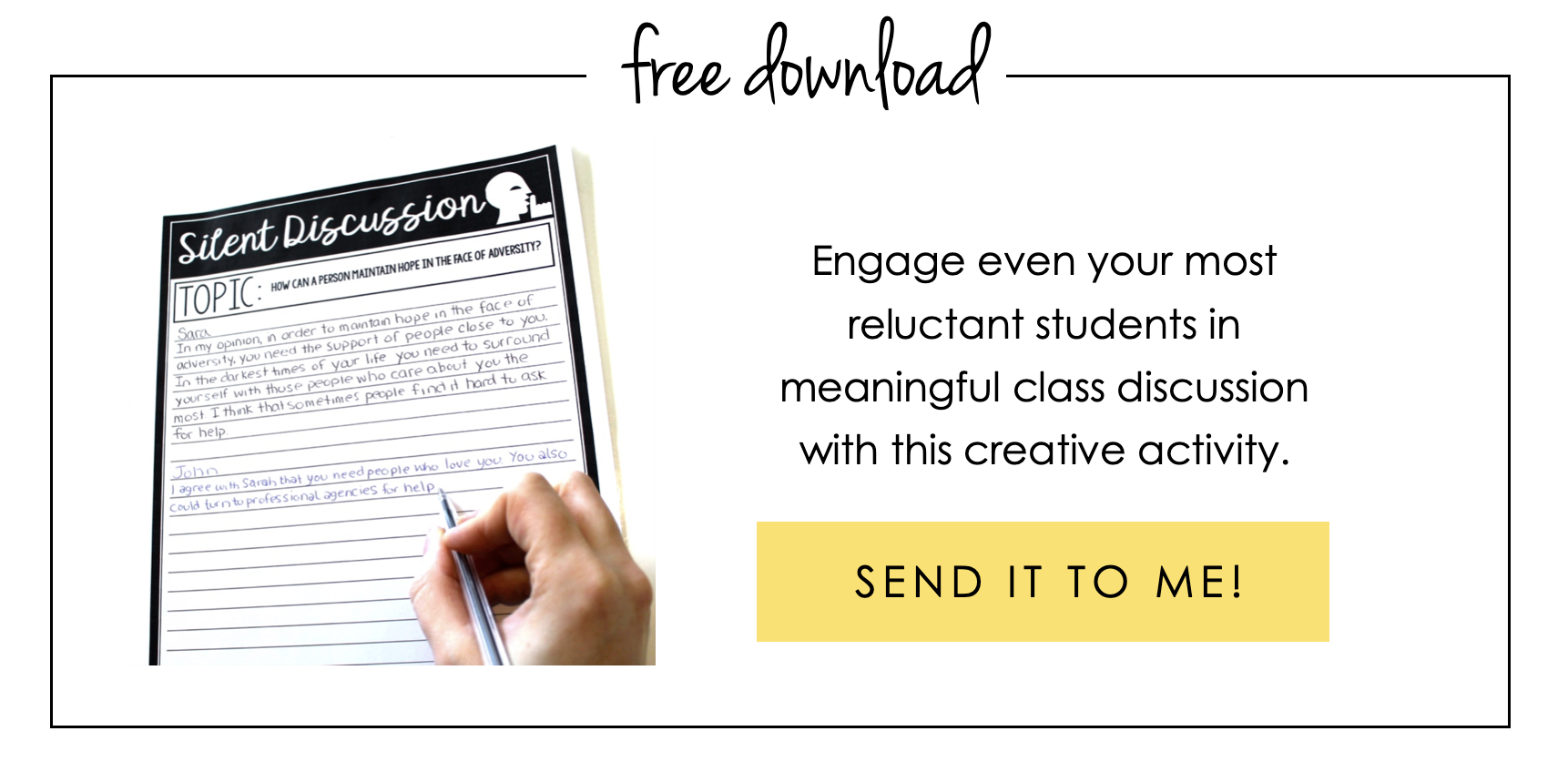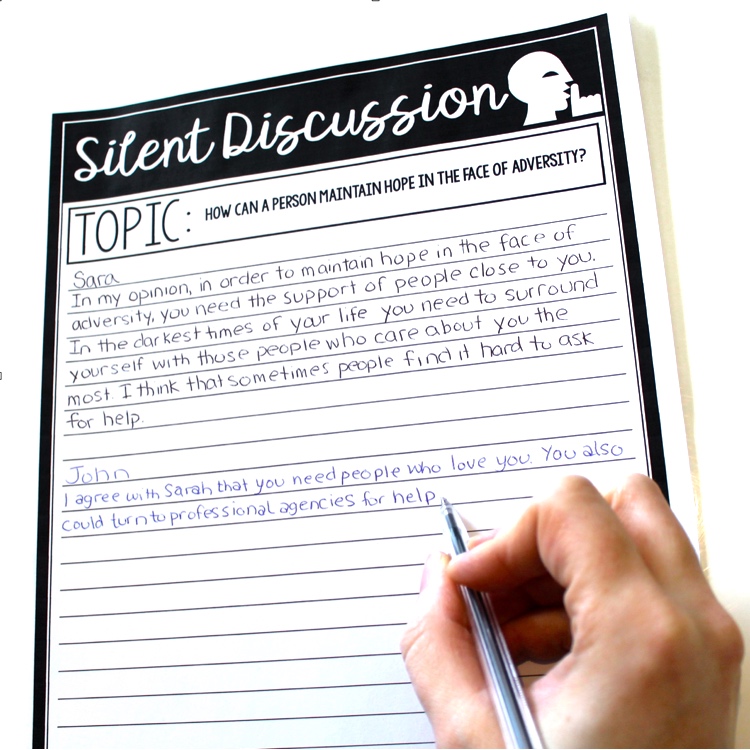PRESTO PLANS
Sent straight to your inbox
CLICK HERE TO ACCESS
Sign up to receive 10 ready-to-use ELA resources your students will love!
10 FREE ELA RESOURCES

Facilitating a Silent Discussion
This school year, the grade 9 and 10 English Language Arts team at my school vowed to open up our doors to share more resources and ideas, and WOW did it make a difference! It’s typical for middle and high school ELA teachers to close our classroom doors and “do our own thing.” However, as I learned this year, the best resources that teachers have in their school are their own co-workers. One of the teachers in my school introduced me to a new way to facilitate and improve conversation in the classroom—by doing a silent discussion. Ok, I know what you’re thinking. This oxymoron makes no sense but stay with me for a few minutes because this activity made for the best classroom discussion I have ever had.
What is a Silent Discussion?
First of all, what are silent discussions? Silent discussions is an activity that has your ELA students respond to a variety of discussion questions in writing before sharing with the rest of the class. Students circulate the room silently at their own pace and move to questions of their choice, responding to prompts and other students’ opinions. You can get FREE Silent Discussions by clicking here.
1. Discussion Questions
The first thing you’ll want to think about when preparing a silent discussion is the discussion questions themselves. When I first tried this activity, I was starting a class novel unit (The Giver by Lois Lowry), so we used discussion topics that were relevant to the themes in the novel. For example, some of the questions included were:
- “Do you think a world without pain would be a utopia?”
- “Would you like to live in a world of “sameness”? Why or why not?”
It is worth mentioning that you don’t necessarily even have to use questions related to something you are studying. I have also done a general silent discussion using ethical prompts. The questions put students in ethical dilemmas and have them explain what they would do in each situation. They absolutely LOVE these…
 2. Number Students Off
2. Number Students Off
At the beginning of the activity, you will want to number off students according to the number of questions you have. I had a class of 25. We used 11 different discussion questions and that number seemed to work quite well. If you go have 11 different discussion questions, for example, you’ll go around the classroom and assign each student a number from 1 – 11. Then repeat. Keep in mind that it’s okay for more than one student to get the same number.
3. Write Down the Discussion Questions
Project or write the discussion questions on the board, numbering them. Get each student to take out a piece of paper and write down the question associated with the number that you assigned to them. If you use the FREE silent discussion activity, students will write their questions in the space given beside the word “TOPIC” as shown below.
4. Let the Silent Discussion Begin!
Ok, now you’re ready for the silent discussion itself to begin. Here’s how it works…
- Students begin by writing a response to the question they were first assigned.
- When they are done, they get up and circulate the room (silently) waiting for someone else to be done.
- Then, they sit down at their new seat, read their new question and what the person had written before them, and write their own response! Their response could be to the original question or to something that another student has written before them.
Tell students if they arrive at a question they have already answered to choose another place. Some teachers choose to also give students a minimum number of responses they have to make, but I had some struggling writers, so I just let them move about at their own pace.
Also, keep in mind that sometimes (especially early on), students may have to stand and wait a couple of minutes to find a new place to sit! I spent about 30 minutes doing this, but you could do it for a longer or shorter period depending on your class’ stamina.
5. Open Discussion
Let students return to their seats and read their original discussion topic. Then, as a class, go through each of the questions one at a time and have an open discussion. Encourage students to reference what others have said from the sheet in front of them. By this point, your students have already engaged in meaningful discussion with one another through writing, and so not only will they be warmed up, but they will also have plenty to talk about during your open discussion.
The Benefits of a Silent Discussion
There are many benefits to doing silent discussions with your ELA classroom. For one thing, silent discussions can be a great way to improve class discussion when no one wants to talk. Here are some more perks of this activity:
- When you do the open discussion at the end, students are far more inclined to speak as they have had a chance to process the information, read the thoughts of their peers, and formulate their own opinions.
- Not all students will have completed the same questions, so you are likely to get different students participating for different questions.
- It makes for 30 minutes of almost complete silence, which can be nice for a teacher headache.
- If it is related to something you are studying, you can return to the discussion questions at the end to see if their opinions have changed.
I provide more tips for engaging a reluctant classroom in another post. Click here to read it now.
I hope you found this helpful and that you and your students have fun with this silent activity!
Search the blog for what you are teaching
GIVEAWAYS
sent straight to your inbox!



share this post